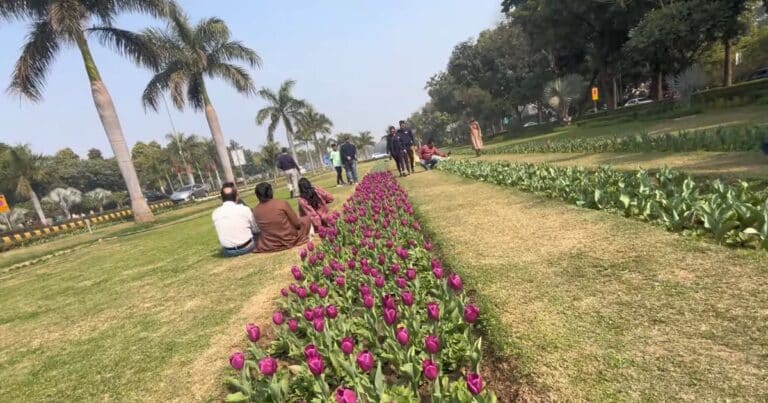The Hornbill Festival is a testament to Nagaland’s rich cultural tapestry. Held annually in the state of Nagaland, the festival celebrates the rich culture and heritage of the Naga people, their love of music, and the indomitable spirit of the Northeast of India.
The Hornbill Festival, a.k.a. Hornbill Rock Festival, takes place at the Kisama Heritage Village, a living museum that showcases the traditional life and culture of the Naga people. To encourage inter-tribal interaction and promote Nagaland’s cultural heritage, the Government of Nagaland organizes the Hornbill Festival every year in the first week of December between the 1st and 10th. The Hornbill Festival is also called the Festival of Festivals.
This annual festival transforms the serene landscape into a pulsating hub of musical energy that reverberates through the hills and resonates with the region’s vibrant heritage.

Unveiling the Beat
Showcasing a diverse range of rock genres, the Hornbill Festival brings together local and international bands, creating an electrifying atmosphere that captivates music enthusiasts worldwide. From the rhythmic beats of indigenous Naga rock to the soul-stirring performances by renowned artists, the festival is a harmonious blend of tradition and modernity.
Hornbill Festival – Interesting facts and trivia
- The Hornbill Festival is named after the hornbill, a bird considered sacred by the Naga people.
- The festival was first held in 2000 and has been held annually ever since.
- The festival is held in December, during the winter months in Nagaland.
- The festival attracts visitors from all over India and the world.
- The festival is a significant tourist attraction for Nagaland and helps to promote the state’s rich culture and heritage.
Important information:
- Hornbill Festival Tickets: Passes must be purchased daily, and the price range is between INR 20 and INR 30.
- Domestic tourists: If you are traveling to Nagaland from a different state in India, you must get the inner line permit from the local government to attend the festival.
- Foreign tourists: You must register at the Foreigners Registration Office (FRO) within 24 hours of arrival.
How to reach Nagaland by air?
The Hornbill Festival takes place in Kisama Heritage Village, just outside Kohima, the capital of Nagaland. Dimapur Airport is the nearest airport, and a scenic drive to Kohima awaits from there. The airport is well-connected to Guwahati, Kolkata, and Imphal via regular frequent flights. If you come from other cities, the best option is to fly to Guwahati and then to Dimapur.
You may also travel by train or road to Nagaland. Dimapur’s railway station is well-connected. If you are still looking for a direct train from your city, you may book a train to Guwahati first and then a connecting train from Guwahati to Dimapur.
Dimapur is also well-connected by road to all its neighboring cities like Guwahati and Shillong.
Beyond the Music: Things to do and places to visit near the Hornbill Festival
While the Hornbill Festival is a symphony of sound and culture, the adventure continues. Exploring the surroundings unveils a treasure trove of experiences, and you must not return without visiting these places.
1. Kohima War Cemetery
The Kohima War Cemetery is just a stone’s throw away from the festival grounds, a poignant reminder of the fierce Battle of Kohima during World War II. History buffs can pay their respects to the soldiers who laid down their lives while marveling at the serene landscape that now stands as a symbol of peace.
2. Dzukou Valley Trek
Located on the border of Nagaland and Manipur, a trek to the nearby Dzukou Valley is a must for nature enthusiasts. It is famous for its lush meadows, rolling hills, and stunning views of the surrounding mountains. The valley offers a picturesque escape from the festival’s high-energy vibes.
3. Khonoma Village
Immerse yourself in the traditional Naga way of life by visiting Khonoma Village, known for its lush terraced fields and unique conservation practices. Engage with the friendly locals, explore the ancient Angami heritage, and witness the harmony between man and nature.
4. Nagaland State Museum
The Nagaland State Museum is a museum that showcases the history and culture of Nagaland. The museum has a collection of artifacts from the state’s various tribes and exhibits on the state’s natural history and geography.
Tips for attending the Hornbill Festival
- Book your accommodation and travel well in advance, as the festival can get very busy.
- Purchase your tickets in advance to avoid long lines.
- Wear comfortable shoes and clothing, as you will be doing a lot of walking.
- Bring a hat and sunscreen to protect yourself from the sun.
- Be prepared for crowds, especially during the peak hours of the festival.
- Be respectful of your surroundings, prioritize cultural sensitivities, follow the local guidelines for preserving the environment, and avoid disturbing wildlife.
The Hornbill Festival is more than just a music event; it’s a cultural journey that beckons travelers to explore the heart of Nagaland. Whether you’re drawn to the electrifying beats of the festival or the serene landscapes surrounding it, this experience promises memories that resonate long after the last chord fades away.
So, pack your bags, set your soul to the rhythm, and get ready to experience an unforgettable adventure in the hills of Nagaland!



